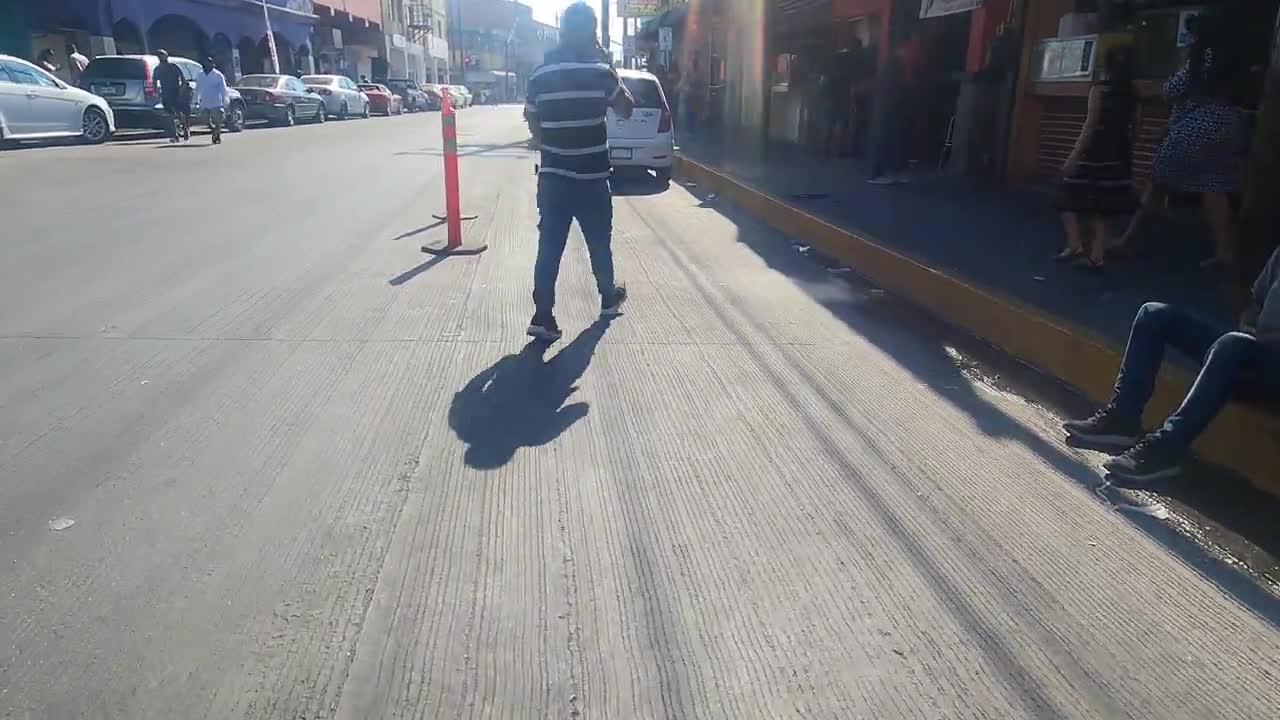Premium Only Content

Zona Norte Tijuana(2021)Walk Tour Zona Norte Tijuana Mexico|Did I Get Beat Up Recording Prostitutes?
I am famous for going around places in Latin America and filming via go pro prostitute zones!Today is when I went to a zona de tolerancia in Mexico and I done record dem hoes.If you want to see if I get beat up for doing it or not you have to watch it all the way through(ahh sucker)If your wondering what a ho train is and who the other voice is ..well you need to watch more 80's/ 90's pro wrassling is all I can say...
Join Robinhood with my link and we'll both get free stock 🤝 https://join.robinhood.com/briand-4987bcb
https://www.referyourchasecard.com/18g/S5XBOCF5JH
wiki
#ZonaNorte (officially Colonia Zona Norte, "North Zone (neighborhood)") is an official neighborhood, as well as a red light district located in Tijuana, Mexico. It is among the largest red-light districts in North America known for its brothels, which present themselves in public as strip clubs and bars, similar to gentlemen's clubs in the United States.
Many bars and strip clubs in Tijuana's red light district in which women are the feature entertainment also operate as brothels, which offer attached hotel rooms for short intervals of time. Many other bars, styled "lady bars", function as less explicit social clubs where #prostitutes and nude #sex shows are not accommodated on site, but fichas (drinks for the working ladies) are offered at elevated prices, and freelance prostitutes look for clients.
These compare in most respects to the hostess bars in Japan. The red light district in Tijuana is also known for street prostitution, particularly behind the main strip clubs on Calle Coahuila, in a large high-traffic alley named "Primer Callejón Coahuila".
Illicit drug sales are also common to the red light district, which happens night and day in plain view because the local police tolerates it in the form of collecting their commission. The dealer's selling phrase is "¿Cuantos?" meaning "How much?" in Spanish. Heroin use and theft, not common elsewhere in Mexico, are rampant here.
Due to its proximity to San Diego, California, it is frequented by US citizens, as well as locals. The district is also known as La Coahuila for the name of the primary avenue that runs through it.
Zona Norte is bordered by Downtown Tijuana on the south, Zona Río on the east, San Diego and the Mexico–United States border on the north, and colonia Castillo on the west. Politically, the Zona Norte neighborhood is part of the Delegación Centro Tijuana's red light district itself encompasses just a couple of blocks within Zona Norte.
The unofficial boundaries of the red light district extend from Avenida Revolución to Av. Miguel F. Martinez, east to west, and from Baja California to Calle Primera, north to south. The focal point of the red light district, however, is the core block bordered by Calle Coahuila on the north and Primer Callejón Coahuila on the south between Constitucion and Niños Heroes.
Prostitution is permitted in Tijuana's red light district, designated a zona de tolerancia, or "tolerance zone." Legal prostitution within the city requires sex workers to obtain a permit and be subjected to monthly health checkups.[2] Brothels in Tijuana, many of them modeled on strip clubs and hostess clubs, must also conform to certain health regulations, such as standards of cleanliness, fixed operating hours, and be placed a regulated distance from schools or day care centers.[
In addition to established brothels, there are prostitutes who work outside on the callejones or alleys and are referred to as paraditas, Spanish for "the standing girls", for their practice of standing on the street to advertise their services. Paraditas have been regarded as part of Tijuana's cultural history, and attempts to force the women off the streets to curb such public advertising have proven unpopular and unsuccessful.] These street workers are legal prostitutes who simply prefer the relatively quiet environment of the street to the loud music and smoky atmosphere of the bars.
Illegal drug sales occur in Zona Norte.[ Substance abuse is not uncommon. 10% of hospitalizations in Tijuana are for alcoholism.
A book found that many of these girls lie about their age, saying they are 19–22, and do not work the streets, but special brothels. The study suggests much of trafficking claims are exaggerated by organizations with political, moral, and religious agendas.
-
 23:18
23:18
Crowder Bits
5 hours agoDebunked: John Oliver's Outrageous Lies About Trump 2.0
49.4K32 -
 LIVE
LIVE
Dr Disrespect
1 hour ago🔴LIVE - DR DISRESPECT - TARKOV - ZERO TO HERO PISTOL ONLY
2,379 watching -
 2:00:46
2:00:46
Steven Crowder
4 hours ago🔴 Fight! Major Lawsuit Announcement...
346K187 -
 LIVE
LIVE
The Dana Show with Dana Loesch
1 hour agoTRUMP AND ELON MUSK DEFEND DOGE | The Dana Show LIVE On Rumble!
614 watching -
 LIVE
LIVE
Grant Stinchfield
1 hour agoThe Heist of Fort Knox That Has NOT Happened Yet
327 watching -
 LIVE
LIVE
The Charlie Kirk Show
1 hour agoTHE CHARLIE KIRK SHOW IS LIVE 02.19.25
6,532 watching -
 1:00:47
1:00:47
The Dan Bongino Show
3 hours agoWhat Did Zelensky Know? When Did He Know It? (Ep. 2426) - 02/19/2025
466K775 -
 45:27
45:27
Benny Johnson
2 hours ago🚨Kash Patel WINS Critical FBI Director Confirmation Vote as Trump MASS FIRES Deep State Prosecutors
55K42 -
 1:08:01
1:08:01
Timcast
3 hours agoDemocrats PANIC Over Trump Order To "Seize Control" Of Federal Agencies, Trump Asserts FULL Control
106K63 -
 55:32
55:32
MYLUNCHBREAK CHANNEL PAGE
18 hours agoA Little Help From Angels?
41.7K13